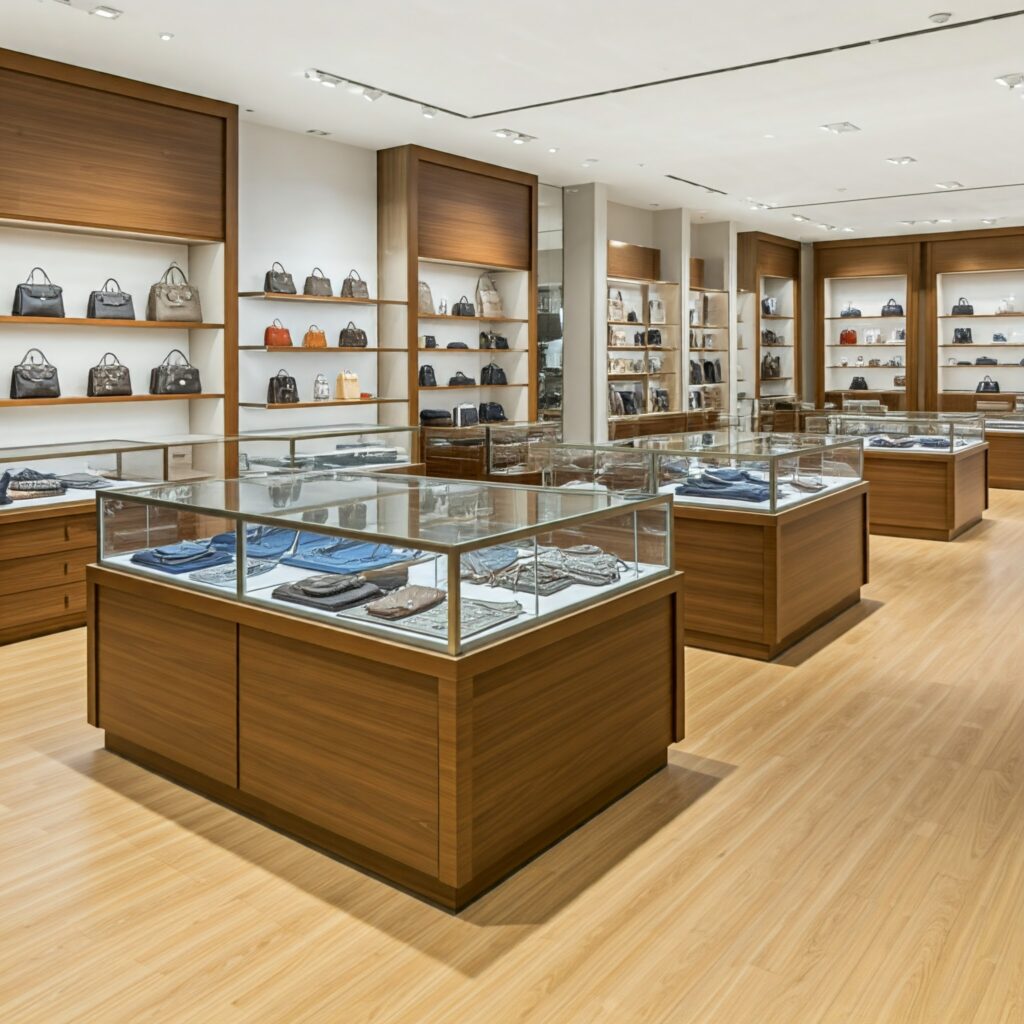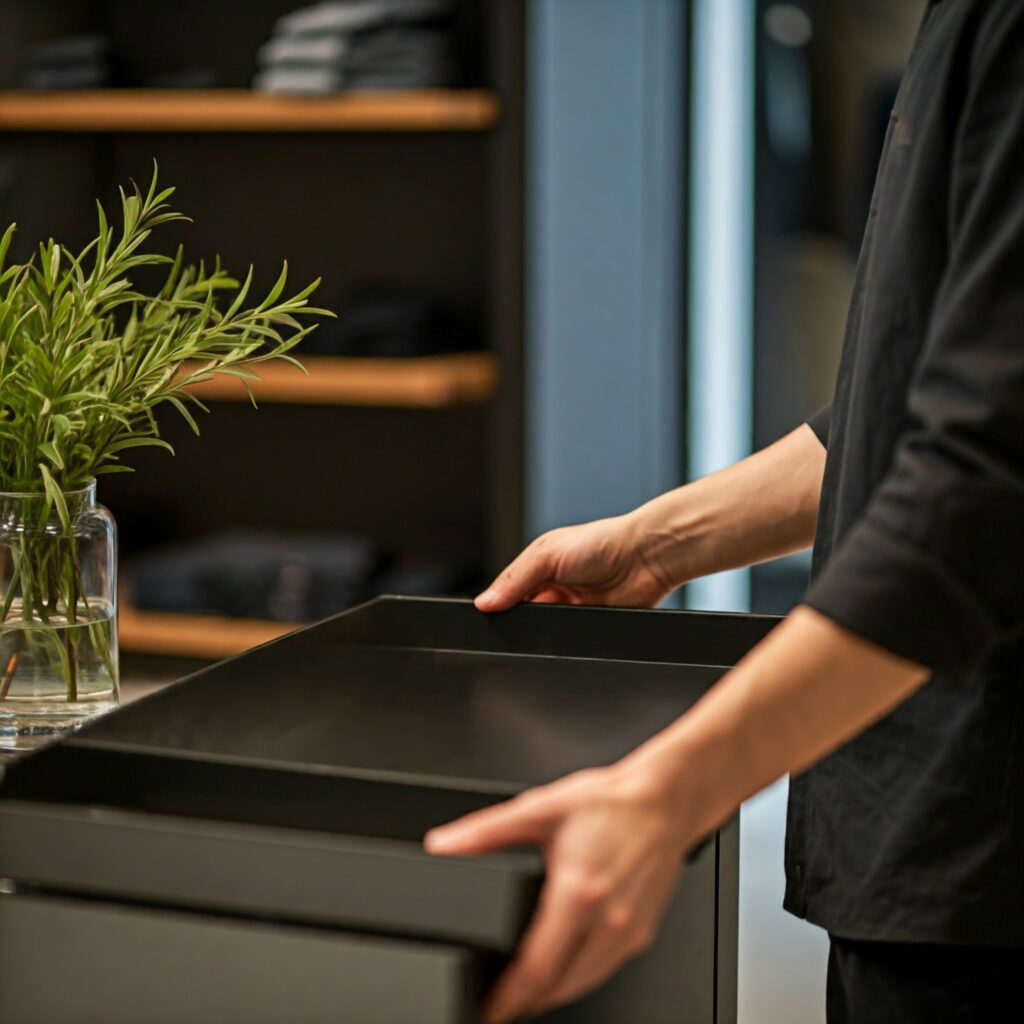Retail fixtures play a crucial role in creating an inviting and functional store environment. They not only support the display of merchandise but also contribute to the overall aesthetic and brand identity of the store. Given the significant investment in these fixtures, maintaining them for long-term use is essential to ensure they continue to serve their purpose effectively. Proper maintenance not only extends the lifespan of the fixtures but also enhances the shopping experience, reduces replacement costs, and supports sustainability efforts.
In this essay, we will explore best practices for maintaining retail fixtures to ensure their longevity and optimal performance.
1. Regular Cleaning and Upkeep
One of the simplest yet most effective ways to maintain retail fixtures is through regular cleaning. Dust, dirt, and grime can accumulate on fixtures over time, leading to a worn and unkempt appearance. Depending on the material of the fixture, different cleaning methods should be employed:
- Wooden Fixtures: Use a soft, damp cloth to wipe down wooden surfaces. Avoid using excessive water or harsh chemicals, as these can damage the wood. For polished or varnished wood, a gentle furniture polish can be applied to maintain its sheen.
- Metal Fixtures: Metal fixtures, especially those made from stainless steel, can tarnish or corrode if not properly cared for. Use a non-abrasive cleaner to remove fingerprints, smudges, and stains. For stainless steel, a cleaner specifically designed for the material can help maintain its luster.
- Glass Fixtures: Glass displays should be cleaned with a glass cleaner and a lint-free cloth to prevent streaks and smudges. Regular cleaning of glass not only enhances the appearance of the fixture but also improves visibility of the merchandise displayed.
- Plastic Fixtures: Plastic fixtures can be cleaned with a mild detergent and water. Avoid using solvents or abrasive cleaners that can cause the plastic to degrade or become discolored.
Regular cleaning should be part of the daily or weekly maintenance routine, depending on the store’s traffic and environmental conditions. Establishing a cleaning schedule and training staff on proper cleaning techniques can help keep fixtures in top condition.

2. Inspect for Wear and Tear
Over time, retail fixtures are subject to wear and tear due to frequent use, exposure to environmental factors, and the weight of displayed merchandise. Regular inspections can help identify potential issues before they become major problems. Key areas to inspect include:
- Joints and Connections: Check the joints, screws, and bolts that hold fixtures together. Loose or damaged connections can compromise the structural integrity of the fixture, leading to instability or collapse.
- Surface Damage: Scratches, dents, and chips can occur on the surface of fixtures, particularly those made of wood or metal. These damages can detract from the fixture’s appearance and may lead to further deterioration if left unaddressed.
- Signs of Corrosion or Rust: Metal fixtures, especially those exposed to moisture or humidity, can develop rust or corrosion. Early detection and treatment can prevent the rust from spreading and weakening the fixture.
- Glass Integrity: Inspect glass fixtures for cracks, chips, or other signs of damage. Even small cracks can pose a safety hazard and should be repaired or replaced promptly.
Regular inspections should be conducted monthly or quarterly, depending on the fixture’s usage and exposure to wear. Documenting the inspection results and taking prompt action on any identified issues can prevent minor problems from escalating into costly repairs or replacements.

3. Proper Handling and Usage
The way retail fixtures are handled and used can significantly impact their lifespan. Educating staff on the proper handling and usage of fixtures is essential to prevent unnecessary damage. Consider the following practices:
- Weight Limits: Ensure that staff are aware of the weight limits for each fixture. Overloading shelves, racks, or displays can cause them to warp, bend, or break. Clearly label weight limits where applicable, and remind staff to evenly distribute the weight across the fixture.
- Safe Movement: When moving fixtures, use appropriate equipment such as dollies or carts to avoid dragging or lifting heavy fixtures by hand. Dragging fixtures can damage both the fixture and the store’s flooring, while improper lifting can lead to injury or damage to the fixture.
- Avoiding Misuse: Retail fixtures are designed for specific purposes, such as displaying merchandise or storing inventory. Using fixtures for unintended purposes, such as using a display shelf as a seating area, can cause damage and reduce the fixture’s lifespan.
- Adjustments and Modifications: If fixtures are adjustable or modular, ensure that adjustments are made carefully and according to the manufacturer’s instructions. Improper adjustments or modifications can weaken the fixture or cause it to malfunction.
By promoting proper handling and usage practices, store managers can help protect their investment in retail fixtures and ensure their longevity.

4. Environmental Considerations
The environment in which retail fixtures are placed can also affect their durability. Exposure to extreme temperatures, humidity, or direct sunlight can cause certain materials to degrade more quickly. To mitigate environmental impact, consider the following:
- Temperature Control: Maintain a stable indoor temperature to prevent materials from expanding, contracting, or warping. Wooden fixtures, in particular, can be sensitive to temperature fluctuations.
- Humidity Control: High humidity levels can lead to moisture buildup, which can cause wood to swell, metal to rust, and adhesives to weaken. Use dehumidifiers or air conditioning to regulate humidity levels, especially in areas prone to moisture.
- UV Protection: Direct sunlight can cause colors to fade and materials to deteriorate over time. Position fixtures away from windows or use UV-protective film on windows to minimize sun exposure.
- Ventilation: Proper ventilation is important to prevent the buildup of moisture and odors that can damage fixtures. Ensure that air circulation is adequate, particularly in enclosed display cases or storage areas.
Taking environmental factors into account when positioning and maintaining retail fixtures can help extend their lifespan and preserve their appearance.

5. Preventive Maintenance
Preventive maintenance involves taking proactive steps to address potential issues before they lead to fixture failure. This approach can save time and money in the long run by reducing the need for emergency repairs or replacements. Key preventive maintenance practices include:
- Lubrication: Moving parts, such as hinges, casters, and sliding mechanisms, should be regularly lubricated to prevent friction and wear. Use appropriate lubricants as recommended by the fixture manufacturer.
- Protective Coatings: Applying protective coatings, such as varnish, wax, or rust inhibitors, can shield fixtures from environmental damage. For metal fixtures, consider using a rust-resistant finish or paint.
- Reinforcement: If a fixture shows signs of weakening, such as wobbling or bending, consider reinforcing it with additional supports or bracing. Reinforcement can prevent further damage and prolong the fixture’s usability.
- Pest Control: In some environments, pests such as termites or rodents can damage wooden fixtures. Regular pest control measures can help protect fixtures from infestation and structural damage.
Implementing a preventive maintenance plan that includes these practices can help ensure that retail fixtures remain in good condition for years to come.

6. Repair and Refurbishment
When a retail fixture does sustain damage, timely repair is essential to prevent further deterioration. Depending on the extent of the damage, repairs can range from simple touch-ups to more extensive refurbishments. Common repair practices include:
- Touch-Ups: Small scratches, chips, or dents can be touched up with paint, stain, or filler to restore the fixture’s appearance. Touch-ups should match the original finish as closely as possible to maintain a consistent look.
- Structural Repairs: If a fixture’s structural integrity is compromised, such as a broken shelf or leg, professional repair may be necessary. In some cases, replacement parts can be sourced from the manufacturer to restore the fixture to its original condition.
- Refinishing: Over time, the finish on wooden or metal fixtures can wear away, leaving the surface vulnerable to damage. Refinishing involves sanding down the old finish and applying a new coat of paint, varnish, or sealant to protect the fixture and enhance its appearance.
- Reupholstering: For upholstered fixtures, such as seating or padded displays, reupholstering can give the fixture a fresh look and extend its lifespan. Choose durable fabrics that can withstand frequent use and are easy to clean.
By addressing damage promptly and investing in repairs, retailers can maximize the value of their fixtures and avoid the cost of premature replacement.

Conclusion
Maintaining retail fixtures for long-term use requires a proactive approach that combines regular cleaning, inspection, proper handling, environmental considerations, preventive maintenance, and timely repairs. By following these best practices, retailers can extend the lifespan of their fixtures, reduce maintenance costs, and create a more appealing shopping environment for customers. Investing in fixture maintenance not only preserves the aesthetic and functional value of the fixtures but also supports sustainable retail practices by minimizing waste and resource consumption. Ultimately, well-maintained fixtures contribute to the overall success and profitability of the retail business.

